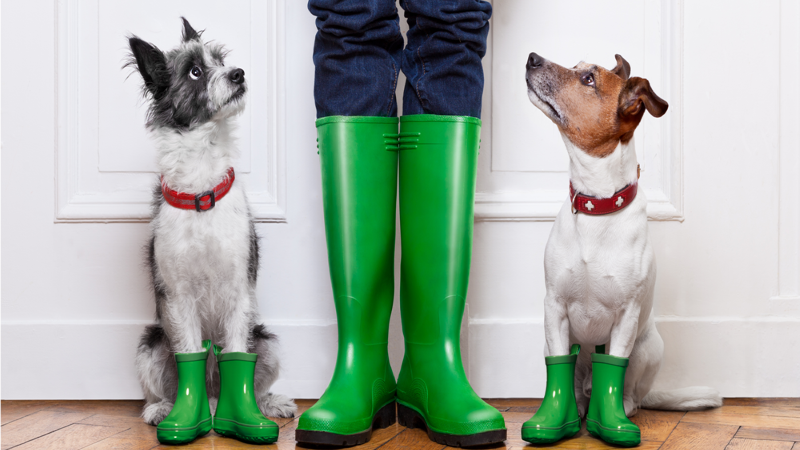The old proverb says, March comes in like a lion and goes out like a lamb. Most of us would agree that March can be a month full of ups and downs, shorts and t-shirts one day, jeans and sweaters the next. The fluctuating temperatures can be a recipe for severe weather.
When severe weather hits, it is imperative to have a system in place to keep your family safe. This includes the furry members of your family. You may remember one of our September blogs, National Disaster Preparedness Month. In it, we gave a list of items necessary to have in an emergency kit for your pet.
When we consider the unpredictable weather during the month of March, it is a good time to revisit your emergency kit and check for expired products. If you have not assembled an emergency kit, consider this your friendly reminder to put one together.
Pet emergency kit supplies
- First aid supplies: Here are some important items to remember to pack for a dog and/or cat (see the AKC Pet Insurance first aid checklist for a complete list): syringe, gauze pads, adhesive tape, sterile eyewash solution, antiseptic cleanser, tweezers, latex gloves, digital quick read thermometer, and cotton balls. If you prefer, you can purchase a ready made kit for your pooch here. Reviewers commented on how pleased they were to have the amount of first aid supplies provided by this kit, all compressed into a small bag that is easy to take along on hikes or have ready in the event of an emergency.
- Survival supplies: Your survival kit should include enough food and water for at least three days, a collapsible water and food bowl, and litter (for your cat). It should also include required medication and vet records, including vaccinations. This kit, for cats, is stocked with food and items that will store safely for five years. The kit was put together by a team of disaster preparedness experts and veterinarians and even includes an emergency pet alert sticker to put on your door or window.
- Important phone numbers andpPhotos: On an index card, write your vet’s phone number, Pet Poison Helpline (1-800-213-6680), and your pet insurance policy and phone number You should also have a current color photo of your pet (in case you and your pet are separated during an emergency).
Prepare for everything!
- Display pet window clings to alert first responders to the fact that pets live in your house. You can purchase 2 for $5.95 here.
- Make sure your pets are properly identified with up-to-date tags. Microchipping is also a good idea. Petpartners offers reimbursement towards microchipping with their wellness care endorsement.
- Practice tornado drills with all family members, including the four-legged ones. Your emergency plan may involve leashing or kenneling your dog or putting your cat in a pet carrier. Make sure to reward your pets after the drill so they view emergency training as a good thing and to ensure they are compliant in a real emergency.
- Plan for your pet to have a place to go, should your home be damaged in a storm or other natural disaster. Some shelters and vets offer temporary foster care.
- Enroll your pets in pet insurance before an emergency occurs so you can be sure you can afford accident or illness veterinary bills that may result from the situation.
When you consider that in an emergency, every second counts, why would you delay making your emergency kit? Make one today and put it in an accessible (but not too accessible--you don’t want to go “borrowing” from it) spot. Happy kit packing!

